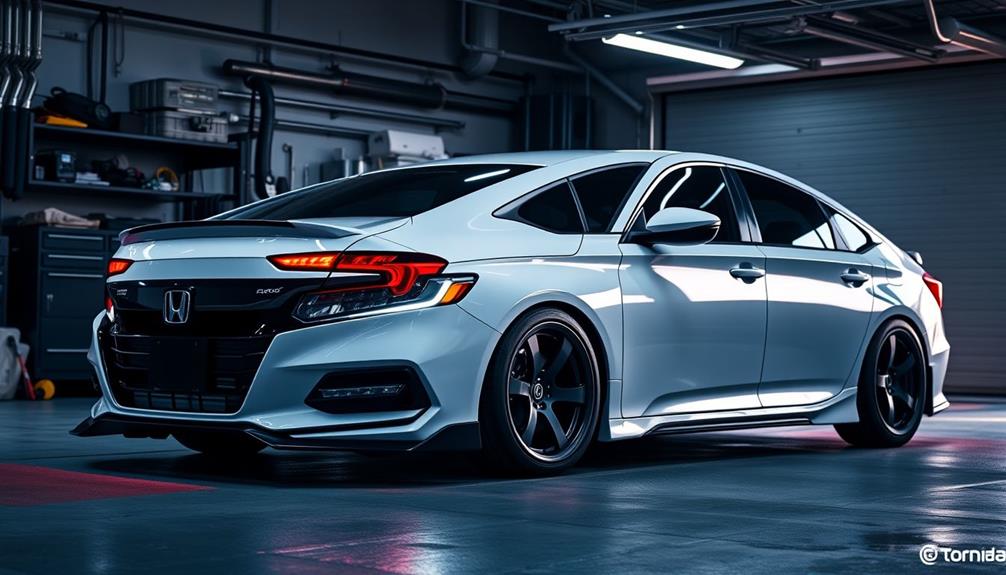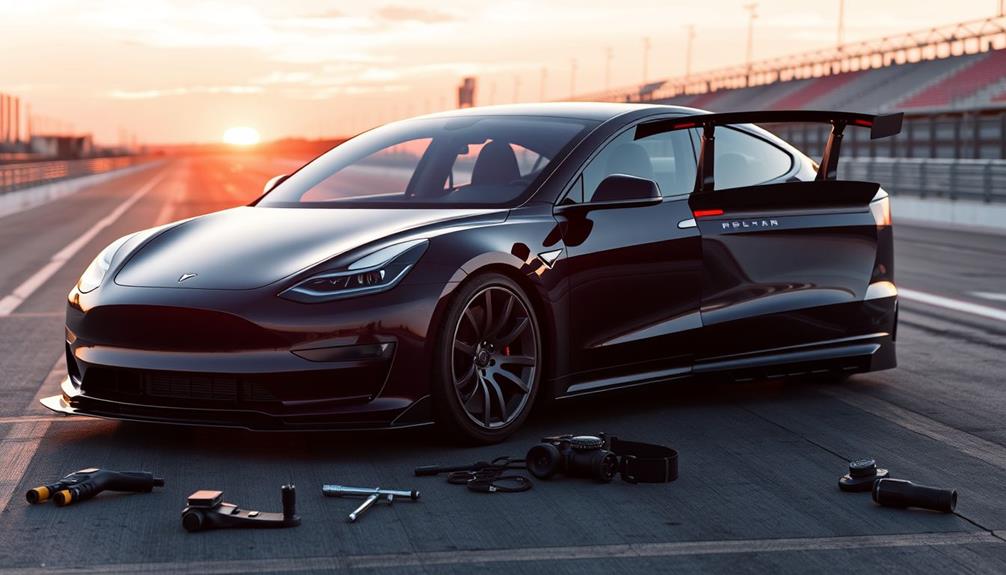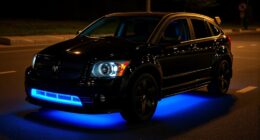When it comes to charging your Tesla, your wait time varies. If you hit a Supercharger, you can gain up to 200 miles of range in just 15 minutes. At home, using a Wall Connector, you might spend about 8-10 hours for a full charge. If you're using a standard outlet with a Mobile Connector, it could take much longer—think 2-3 miles of range per hour. To maximize efficiency, aim to charge to around 80-90% for daily use. Curious about the best charging practices and strategies? There's more to explore!
Key Takeaways
- Superchargers add up to 200 miles of range in just 15 minutes, making them ideal for quick stops during road trips.
- V3 Superchargers can charge larger batteries from 5% to 95% in approximately 51 minutes, depending on vehicle model and battery state.
- Home Wall Connectors provide up to 44 miles of range per hour, allowing a full charge overnight in 8-10 hours.
- Charging from 80% to 100% takes significantly longer than charging from 20% to 80%, with diminishing returns on charging speed.
- Aim for 80-90% charge for daily use to maintain battery health and minimize overall travel time at charging stations.
Overview of Tesla Charging Options

When it comes to charging your Tesla, you've got a variety of options at your fingertips. Depending on your needs, you can choose from Superchargers, Wall Connectors, Mobile Connectors, and Destination Charging. Each option offers different charging speeds and range per hour, making it easy to find the right fit for your lifestyle.
Superchargers stand out as the fastest choice, adding up to 200 miles of range in just 15 minutes. This is perfect for long road trips or quick stops.
Wall Connectors, on the other hand, are ideal for home charging, providing up to 44 miles of range per hour. If you're looking for a more portable solution, Mobile Connectors allow you to charge using standard 120-volt outlets, offering 2 to 3 miles of range per hour. This is best suited for overnight charging when your mileage is low.
Additionally, Destination Charging features over 40,000 Wall Connectors at popular venues, matching the charging speed of home Wall Connectors.
With these diverse charging options, you can easily keep your Tesla powered up and ready to hit the road.
Supercharger Speed and Efficiency
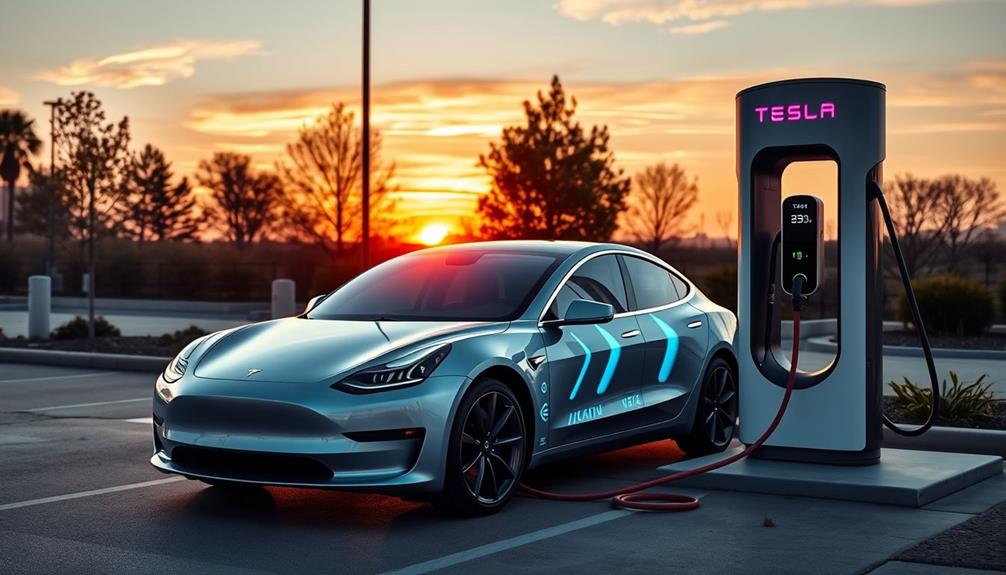
When you plug into a Tesla Supercharger, you can quickly gain up to 200 miles of range in just 15 minutes, making it the go-to option for fast charging.
However, charging speed isn't always consistent; it can vary based on your vehicle model and other factors.
Let's explore how efficiency plays a role and compare these Superchargers with other charging options.
Charging Speed Overview
Tesla's Supercharger network revolutionizes the way electric vehicle owners think about charging time. With the ability to add up to 200 miles of range in just 15 minutes, Superchargers offer the fastest charging option available for your Tesla vehicle.
When you're aiming for a full charge, it typically takes about one hour at a Supercharger, although this can vary based on your battery state, model, and current temperature.
If you're using a V3 Supercharger, you can experience charging speeds of up to 250 kW, allowing larger battery sizes, like the Model S Plaid, to charge from 5% to 95% in approximately 51 minutes.
However, be mindful that charging speed can decrease if multiple Teslas are using the same station, as the power supply is shared among certain stalls.
To enhance your charging experience, Tesla's navigation system automatically preconditions your battery, optimizing its temperature before you arrive at a Supercharger.
This feature helps guarantee efficient battery charging, ultimately reducing your wait time and keeping your journey smooth.
Factors Affecting Efficiency
Charging efficiency at Superchargers hinges on several key factors that can influence your overall experience. One major aspect is your vehicle model; for example, a Long Range model tends to achieve higher charging speeds compared to others.
Additionally, the energy output of the Supercharger itself plays a significant role. If you arrive with a low state of charge, you'll benefit from faster DC charging rates, adding up to 200 miles of range in just 15 minutes.
However, when multiple Teslas are charging at the same Supercharger location, the charging speeds may decrease due to shared power supplies. You'll notice this particularly when you're charging alongside other vehicles.
It's also essential to take into account the amount of time you spend charging. Charging from 80% to 100% can take considerably longer, so if you're not concerned about that final bit of range, it's often more efficient to limit your charge.
Comparing Charging Options
Understanding the various charging options available for Tesla vehicles helps you make informed decisions about your charging strategy.
When it comes to speed and efficiency, Tesla Superchargers are the fastest option, adding up to 200 miles of range in just 15 minutes. The V3 Superchargers can charge a Model S or Model X from 5% to 95% in about 51 minutes, showcasing impressive Level 3 charging capabilities.
However, keep in mind that charge speeds can vary based on the vehicle model and how many Teslas are using the same station, which can slow down the process.
In comparison, Tesla Wall Connectors and Destination Chargers offer up to 44 miles of range per hour. While this is considerably slower than Superchargers, they're ideal for home charging or during longer stops.
If you're charging from 80% to 100% at a Supercharger, expect it to take longer than charging from 60% to 80% due to diminishing returns at higher charge levels.
Understanding these differences in EV charging infrastructure helps you optimize your charging strategy effectively.
Home Charging Practices
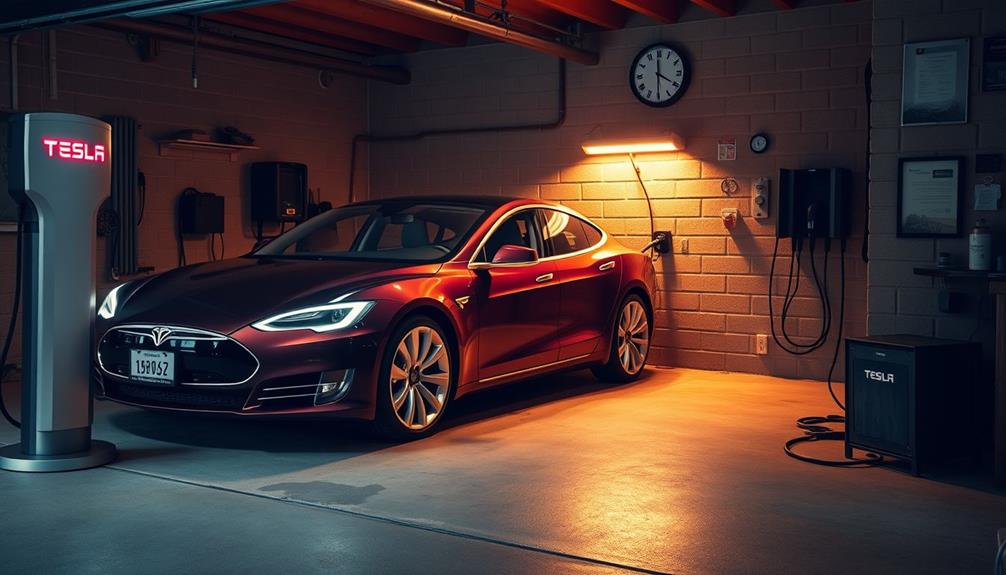
When you choose to charge your Tesla at home, you're opting for a convenient and efficient way to keep your vehicle ready for the road.
Using a Wall Connector, you can charge a Tesla and gain up to 44 miles of range per hour, making it perfect for your daily needs. Typically, it takes about 8 to 10 hours to achieve a full charge, which is ideal for overnight charging when electricity demand is lower. One of the key benefits of using a Wall Connector for charging your Tesla is that it is designed to optimize the charging process and extend the life of your vehicle’s battery. Additionally, the Wall Connector is compatible with all Tesla models, giving you the flexibility to charge any vehicle in the Tesla lineup. This versatile charging solution is a great way to maximize your Tesla mileage capacity while also fitting seamlessly into your daily routine.
To optimize your charging practices, Tesla recommends starting to charge when your battery level drops to 20-30%. For regular use, limiting the charge to 80-90% helps maintain battery health over time.
If you opt for a standard 120-volt outlet with a Mobile Connector, you'll only get 3-6 miles of range per hour, which can take over five days for a full charge—a significant slowdown.
For the best results, finish charging about 30 minutes before your departure. This guarantees your Tesla is at an ideal state of charge, ready to hit the road without any hassle.
Embracing these practices will enhance your home charging experience.
Public Charging Solutions

Public charging solutions play an essential role in enhancing your Tesla driving experience, especially during long journeys. With an extensive network of Superchargers and Destination Chargers, meeting your charging needs has never been easier.
| Charger Type | Charging Speeds | Miles of Range per Hour |
|---|---|---|
| Superchargers | Up to 250 kW | 200+ |
| Destination Chargers | Up to 22 kW | 44 |
| Level 2 Chargers | 6-7 kW | 20-30 |
Superchargers can add up to 200 miles of range in just 15 minutes, making them ideal for quick pit stops during road trips. Meanwhile, Destination Chargers provide a slower but still effective solution, offering up to 44 miles of range per hour, often located at hotels and restaurants.
Level 2 public chargers, frequently found in shopping centers, typically deliver around 20-30 miles of range per hour. To streamline your charging experience, utilize the Tesla app, which provides real-time information on station availability and charging speeds, ensuring you can plan effectively for your next adventure.
Charging Costs and Considerations

Charging your Tesla comes with various costs and considerations that can impact your overall driving experience. When using Supercharger stations, you'll notice that charging costs can vary considerably based on location and time of day. Rates can range from $0.24/kWh at night to $0.48/kWh during peak hours.
Keep in mind that idle fees apply if you leave your vehicle connected after reaching a full charge, so it's best to unplug promptly.
For EV owners, home charging presents a more cost-effective solution, especially if you utilize solar energy. By harnessing solar power, you can save considerably on your electricity costs, making it an appealing option for many Tesla drivers.
When planning long trips, the online trip planner can help you estimate Supercharger locations and associated charging times, allowing you to budget your travel expenses effectively.
Strategies for Effective Charging
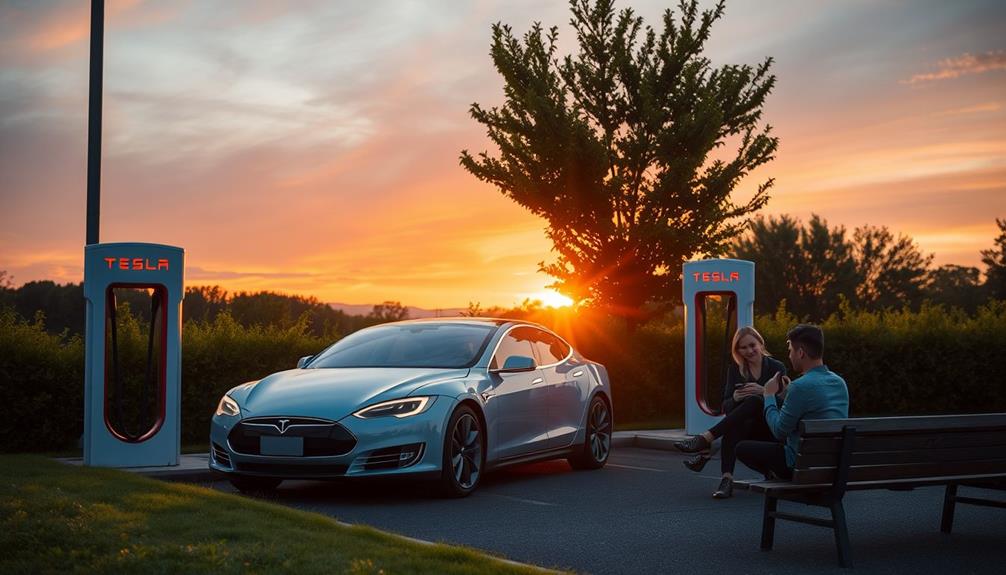
To charge your Tesla effectively, focus on ideal charging times and efficient practices.
Aim for that sweet spot of 80% for daily use, and consider off-peak hours to cut costs while boosting efficiency.
Optimal Charging Times
Effective strategies for ideal charging times can greatly enhance your Tesla experience. By understanding preferable charging times, you can guarantee you have enough charge for your journeys while minimizing wait times.
Here are some tips to keep in mind:
- Charge to 80%: This offers enough range for daily use and preserves battery health.
- Plan for travel: Finish charging about 30 minutes before departure to maximize efficiency.
- Frequent short sessions: Opt for multiple short charging sessions instead of fewer long ones to enhance overall efficiency.
- Buffer zone: Arrive at a Supercharger with at least 20% charge to guard against unexpected detours.
- Time management: Charging from 80% to 90% takes around 50 minutes, while the last 10% can take over an hour.
Efficient Charging Practices
Maximizing your Tesla's efficiency hinges on adopting smart charging practices. For ideal battery health, aim to charge your vehicle to about 80-90% for daily use. This approach not only extends battery life but also saves full charges for longer trips.
When you charge from 60% to 80%, you'll find that the charging durations are similar to those from 80% to 100%. As a result, frequent, shorter charging sessions are more efficient.
Utilizing Supercharger stations effectively can greatly boost your miles of range per hour. Arrive at these stations with a state of charge around 20% to maintain faster charging speeds and have a buffer for unexpected detours.
Remember, charging to 80% or lower on subsequent legs minimizes overall travel time, as higher states of charge lead to longer charging durations.
Consider off-peak charging schedules for reduced costs and faster speeds, as rates may vary throughout the day.
Frequently Asked Questions
How Long Do You Have to Wait at a Tesla Charging Station?
When you arrive at a Tesla charging station, expect to wait anywhere from 15 minutes for a quick boost to around an hour for a full charge, depending on your vehicle's needs and station usage.
How Long Do You Have to Wait to Fully Charge a Tesla?
You might think charging a Tesla takes forever, but it doesn't! Depending on your charger, fully charging can take about an hour at a Supercharger or overnight with a home Wall Connector.
How Long Does It Take to Charge a Tesla at a Public Charging Station?
When you charge your Tesla at a public station, it usually takes about 15 minutes for 200 miles of range. Full charges can take around an hour, depending on your battery state and model.
How Long Does Tesla Supercharging Take?
When you use a Tesla Supercharger, you can expect to add up to 200 miles of range in just 15 minutes. A full charge typically takes around one hour, depending on your vehicle's battery state.
Conclusion
In the world of electric vehicles, understanding Tesla charging options can feel like steering through a maze. But don't let that overwhelm you! Whether you're at a Supercharger or charging at home, knowing your choices helps you save time and money. So, as you commence your Tesla journey, remember: every minute spent charging is a step toward a more sustainable future. With the right strategies in place, you'll be back on the road in no time!

